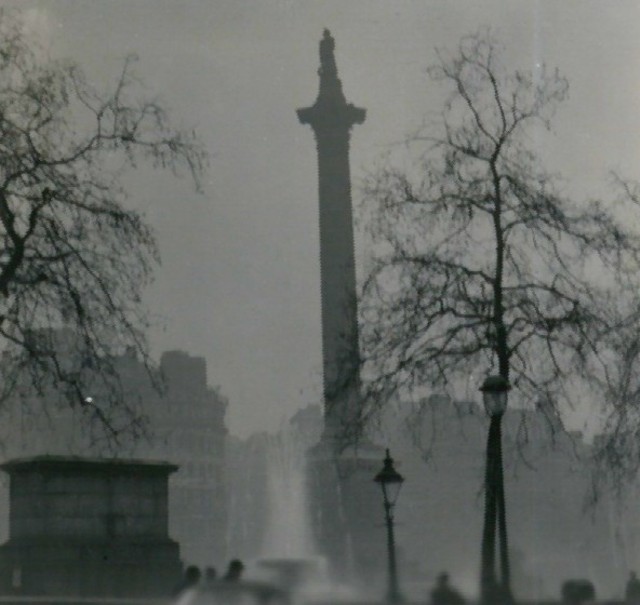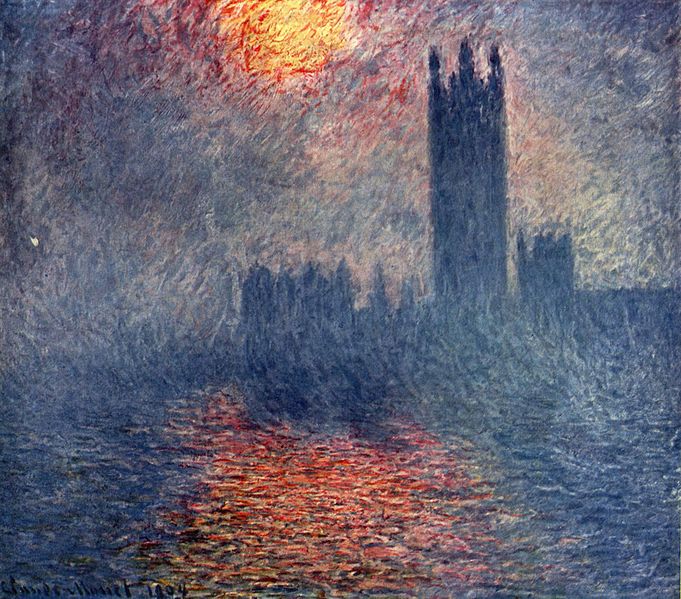My past two blog posts have been about smoky cities in the U.S. Can you tell I’m obsessed? Today’s post will be about London fogs.
London used to be famous for its fogs. “Pea soupers,” they were affectionately called. Growing up, I spent many hours reading Sherlock Holmes, Bleak House, and A Little Princess, and watching spooky movies like Jekyll and Hyde and Jack the Ripper, so I pictured the city as dark and slightly ominous, swirling with fog. When I finally travelled to London in the early eighties, I was shocked by how bright it was.
In fact, heavy, dense fogs had been a fact of life for Londoners for decades. This article in The Times of London (5 December 1837) describes a particularly dismal day:
From daybreak yesterday morning the metropolis west and north-west of Charing-cross was enveloped in a fog the most dense remembered by the oldest person reading in that district. It commenced about 7 o’clock, and continued without any symptom of a clearance until 1 o’clock. Up to nearly 11 o’clock, not only was the darkness so great that the shops were all lighted up, but also every object in the streets, however near, was totally obscured from the view of the persons walking along. . . .It goes on to recount an incident where a coach crashed through a shop window, and how coaches and omnibuses had to have people leading the horses on foot through the streets.
An especially lethal fog rolled into London on December 5th, 1952. Similar to the inversion that had occurred in Donora in 1948 (which I blogged about on Friday), the dense air trapped smoke from the millions of coal fires close to ground level, so that people breathed air filled with tiny particles of sooty black coal. As the weather turned colder, people heaped more coal onto their fires.

London's Piccadilly 1952 © N T Stobbs and licensed for reuse under a Creative Commons Licence thanks to http://www.geograph.org.uk/photo/765606
People walked blindly, their arms outstretched so as not to bash into anything, unable to see their own feet. Theater and opera performances were cancelled because auditoriums filled with fog, making it impossible to see the performance. Crime sprees were reported around the city.
The wind finally blew away the fog, but not before killing thousands of people in four days. According to this article in the journal Environmental Health Perspectives, as many as 12,000 people may have died during or soon after the event.
This deadly environmental episode spawned public health research, the Clean Air Act of 1956, and new requirements that factories build taller chimneys.
